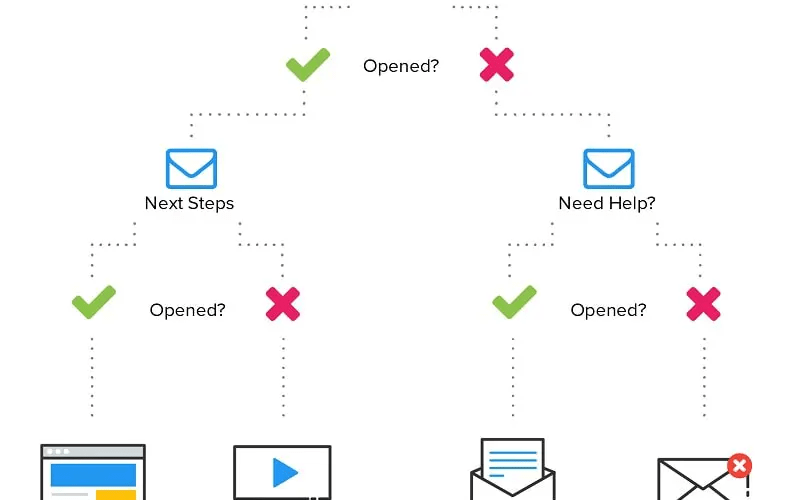Follow this guide for ten email marketing trends you need to know.
Email is the real OG when it comes to digital marketing strategies. It’s reliable, it’s cheap, and it can yield awesome results for all kinds of businesses.
While email has remained a solid marketing bet for many years, it’s also always changing. So if you want to keep up with the times, then it’s important that you understand the latest trends and tactics you can apply to your email marketing strategy.
This will help your emails stay fresh, make a greater impact, and achieve the best possible results for your business.
To help you out, here are ten of the biggest email marketing trends to be aware of right now.
1. Email Marketing Automation and Segmentation
Gone are the days of simply blasting out the same email message to all of your subscribers. Your audience will soon get tired of this, lose engagement, and unsubscribe. Not only this but relying only on these kinds of email blasts isn’t very strategic.
That’s why one of the biggest and most important email marketing trends is to focus on email automation. This is when you set up email workflows and trigger them to send to certain people based on certain actions.
For example, when new subscribers sign up for your mailing list, they could be sent a welcome email drip – a series of emails welcoming them to your mailing list and introducing what you do. If they just get sent your next email blast, they might not be properly nurtured and may be confused about what you’re sending them.
Segmentation is a part of email marketing automation where you place different leads into different email lists based on their activities. For example, you could have a list of existing customers and new prospects. You could break this down even further by including lists of different customers based on the type of products they have purchased.
The more you refine this, the more personalized and relevant the type of messages you can send these leads will be. This will result in more relevant email messages, helping you achieve greater open rates and better engagement.
And not only does email marketing automation let you be more strategic with the types of emails you send, but it also saves you plenty of time. You just set the workflows up and leave them, and all relevant leads will be sent the right content as soon as they perform the relevant action.
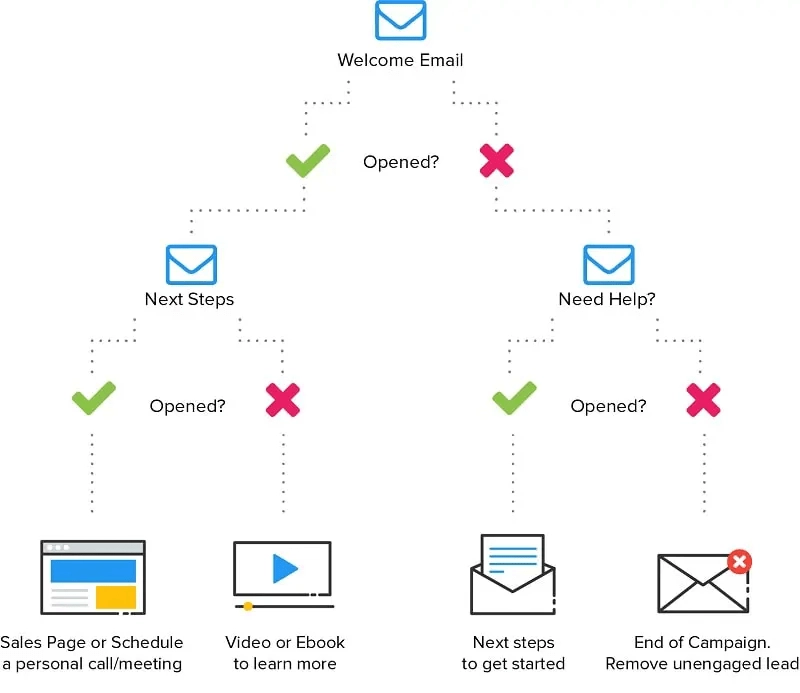
Follow our guide to creating an email drip campaign to help you get started.
2. Data Privacy and Data Protection
Sure, this is a legal requirement more than a trend. Still, it’s something that businesses should take seriously as they craft their email marketing strategy in 2023. The focus on data privacy and data protection is more important than ever.
Of course, you need to add an option for your email recipients to unsubscribe from your emails – this is standard practice. However, you can enhance this by letting subscribers manage their email preferences.
One great idea is to offer a pause button for email subscribers. Instead of having them opt out completely, they could choose to pause email communications from you for a certain time period – like a week or a month.
This could give them a nice break and then help them reengage with your emails later on. It’s a good option to avoid you losing a subscriber.
You could also offer more detailed email preferences – letting subscribers choose the type of emails they want to receive or the topics they want to receive content about. This gives subscribers more power and makes sure that the emails they receive are more relevant to their interests. Doing this will help you improve engagement.
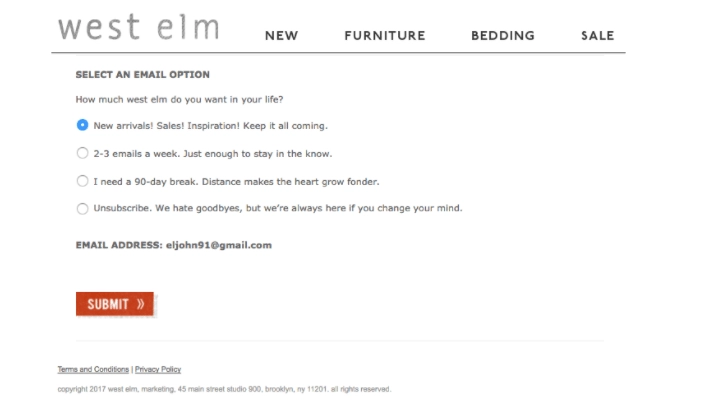
3. Hyper-Personalization
One of the best ways to improve email marketing engagement is to focus on making your emails as personalized as possible.
No, we’re not just talking about including the recipient’s name in the email content. Instead, hyper-personalization is all about sending very specific content to the right person based on an individual basis.
This is basically what we were talking about with automation and lead segmentation. The idea is to create lists based on very specific actions or interests of your leads and target them with content that matches this.
For example, let’s say a customer purchased a winter coat from your online store. You could follow up with them by sending a promotional email about winter gloves or hats that will match their coat. These types of emails are more relevant, which subscribers will appreciate. This also means you’ll have a greater chance of the lead taking action.
To send these types of emails, you’ll need to be set up with the right email marketing platform that offers easy lead management and automated workflows.
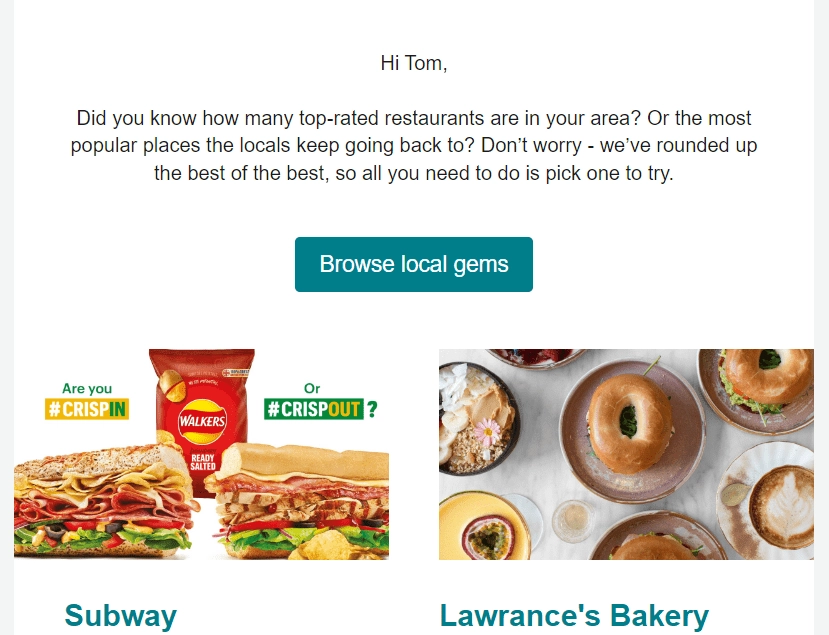
4. Informative Newsletters
Another one of the top email marketing trends we’re seeing is a resurgence of informative newsletters.
Instead of only sending short marketing emails focused on a single CTA, many brands are sending a regular newsletter that focuses on a greater variety of in-depth content.
We can see this with the popularity of newsletters like The Hustle or Morning Brew, which cover a wide range of relative topics each day.
As a business, you can use this kind of long-form newsletter format to help you establish a lot more authority in your niche. If a lead opens a really detailed and insightful newsletter that provides a lot of information about their interests, then they will establish more trust in your brand. This can help you improve the customer journey.
Not only this, but longer newsletters help you promote more content. The more content you publish on your blog, and the more you promote this across your marketing channels, the more traction you’ll be able to generate from that content.
So, if you focus on creating long-form newsletters that cover a range of stories, you’ll probably also be publishing more content on your blog to share in the newsletter. This can help you generate more traffic.
Of course, if you do follow this email marketing trend, you can send these newsletters out with less frequency. Unlike a daily or weekly email send, these could be monthly or weekly special editions.
Content marketing is only getting more important as more people search for answers online. So, if you want to win at your content marketing strategy, then you’ll need to offer maximum value. This is what you can achieve with longer emails.
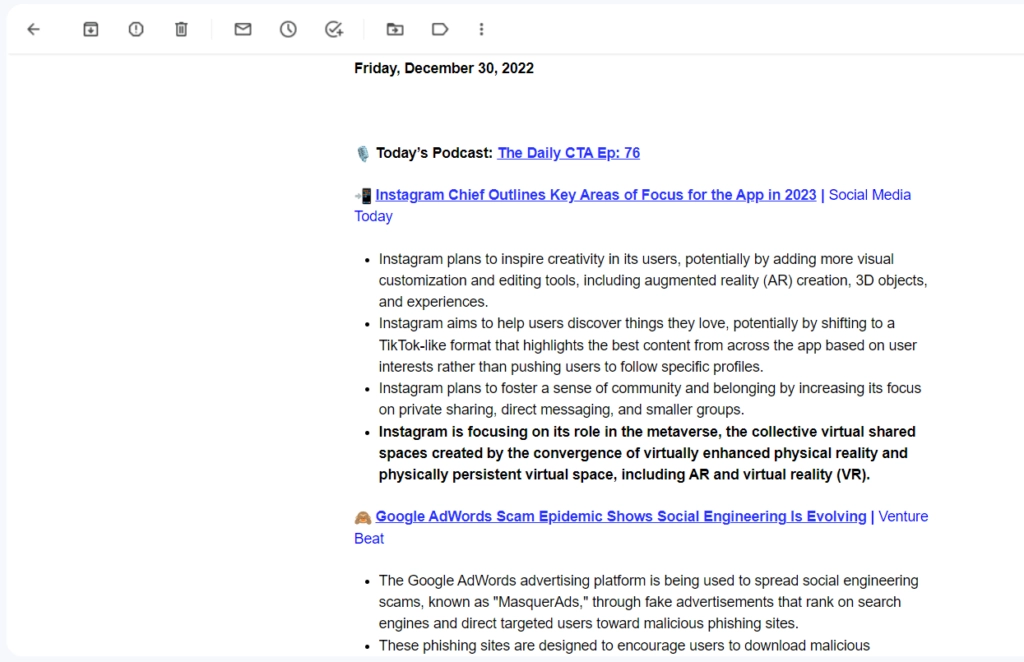
5. Relook Your Email Marketing Metrics
Open rate has always been one of the most important email marketing metrics to watch when you send email campaigns. While this metric is still critical, it could also be losing some of the value it originally held.
This is because of Apple’s release of iOS 15, iPadOS 15, macOS Monterey, and watchOS 8. With this release, the new iOS software includes a feature designed to protect Apple users’ data from third-party apps. This means Apple can preload email content, including opening email tracking software pixels.
So, even if an Apple user didn’t open their email, it could still get marked as opened.
According to Martech, the majority of users (66%) open emails on a mobile device. 58% of those opening emails on a mobile device use an Apple device.
So now, as an email marketer, it could be time to start looking toward new email marketing metrics. For example, CTR could gain greater importance as we head into 2023 and beyond.
6. Utilize the Power of AI
If you look at marketing trends across the board, the one thing you’ll always hear about is AI.
AI technology is developing at a rapid speed, with new AI advancements and possibilities emerging all the time. This includes AI being used in email marketing campaigns to help you achieve more and work smarter.
How is this happening? Well, AI could help you:
- Write subject lines
- Send more personalized emails to each prospect
- Clean up and build email lists
- Restructure and optimize your email marketing campaigns
And more.
Just remember that AI is not out here to replace you – it exists to help you work smarter. By embracing AI and its possibilities, you could end up developing a more impactful and efficient email marketing strategy.
7. All-in-One Systems
Email marketing is no longer just a nice option for businesses to use – it’s essential. And with more people spending more time online, it’s important that businesses pay attention to how they can optimize their email marketing and digital marketing efforts as a whole.
One of the smartest strategies is to utilize an all-in-one email marketing and marketing platform. Instead of relying on disconnected systems, you can save time and money by using a marketing platform that includes your email marketing software, marketing automation tools, lead management database, and more.
Take Wishpond, for example. You can use the website builder to create a site from scratch, optimize it with popups and forms, accept payments, and add an appointment calendar. All of these lead generation tools are connected with the email marketing software that comes in included out of the box.
This way, managing email marketing campaigns and optimizing them across your marketing mix becomes a whole lot easier.
8. Interactive Emails
We’re living in an age where people expect more in terms of technology. Brands shouldn’t just stick to the same old standard emails as time moves on. Instead, it’s important to experiment with adding interactive elements to your emails.
This is when users can click on and engage with the element without opening a new page. This could include things like forms, eCommerce shopping carts, calendars, or more. You could even animate areas of your email to make them feel more alive.
Interactive emails are more engaging and more exciting for your audience. When done right, they can help you achieve greater engagement and responses from your mailing list.
Check out our guide to interactive email strategies to learn more about what elements are available and how you can use interactive emails in your marketing strategy.
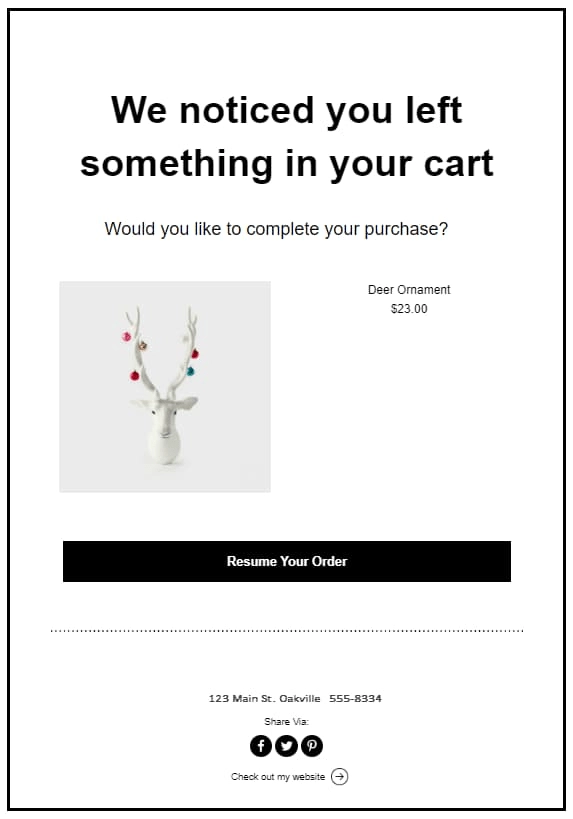
9. Email Design Trends
As more businesses adopt online marketing tactics and become more comfortable online, it becomes increasingly important to stand out. This is why we’re seeing a major focus on design when it comes to email marketing.
Sending plain and boring emails just doesn’t cut it if you want your brand to look exciting and stand apart from the competitors. Instead, try experimenting with new email designs that incorporate unique colors and design elements, including exciting imagery, and generally look and feel more modern.
One of the best ways to tap into this email marketing trend is to use email marketing software that offers a wide library of templates. This way, you can easily change up your email marketing design and explore new design options that match your brand.
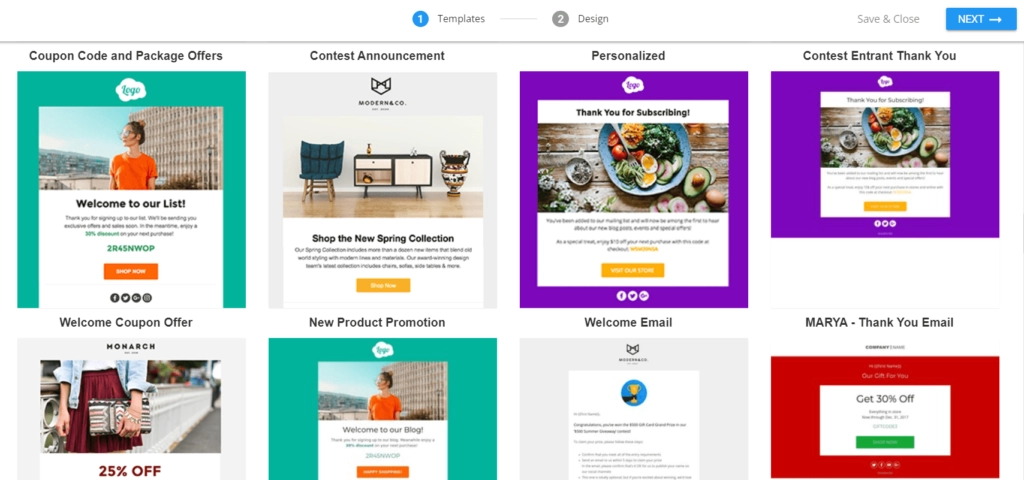
Above: Some of the many different template options you can choose from when you create an email with Wishpond
10. Don’t Forget the Basics
Sure, all of these email marketing trends are exciting and important. However, it’s essential that you don’t overlook the basics of any good email marketing campaign.
Keep your emails focused and highly targeted on a strategic CTA. Test your emails to see what performs best. Keep it simple – overcomplicating someone’s inbox can be annoying. Personalize your content, etc.
These are the foundations of good email marketing, and they’ve been proven to achieve awesome results for many years. So while it’s important to embrace new trends and ideas, never give something up if it’s working for your brand!
Conclusion
Email marketing is one of the most reliable and high-value channels for any kind of business. When done right, it can help you achieve a major ROI. Not only this, but you can use email for all kinds of campaigns and goals.
Follow the email marketing tactics and trends above if you want to stay up to date and ensure your email marketing campaigns continue to perform at their best. However, don’t forget the basics while you do this!
Check out the guide below for more ways to optimize your email marketing strategy.
Related Content
![]() tom
tom

Source link


